Menus
- Enduros / fun bikes and tourers / sports tourers
- Conclusion Enduros / Funbikes
- Tourers / Sports Tourers
- Conclusion Tourer / Sporttourer
- Conclusion Alpen-Masters 2007
- Review of the previous Alpine Masters
- The ratings from part 1
- The Alpen Masters course
- Data Enduros / Funbikes
- Data winner Enduros / Funbikes – Triumph Tiger
- Data tourers / sports tourers
- Data Winner Tourer / Sport Tourer – BMW K 1200 R Sport
- The review of Zep Gori
- The rating of Gert Thole
- The rating of Rolf Henniges
- The review of Kristijan Ticak
- The rating of Sergio Romero
- The rating of Karsten Schwers
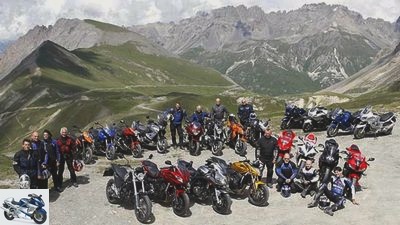
Photo: Kunstle
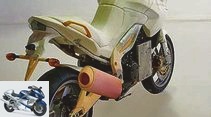
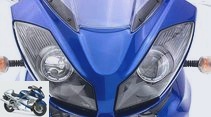
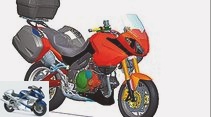
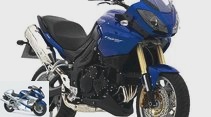
20th photos
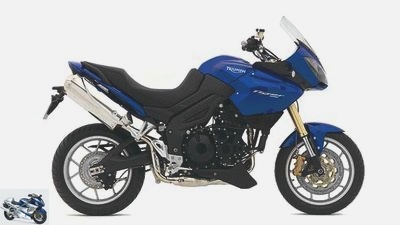
triumph
1/20
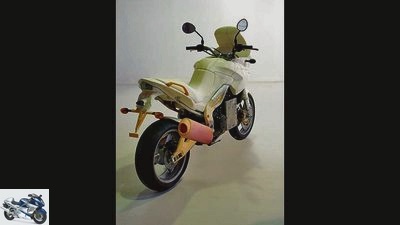
triumph
2/20
From the development phase: a model with a low-lying silencer.
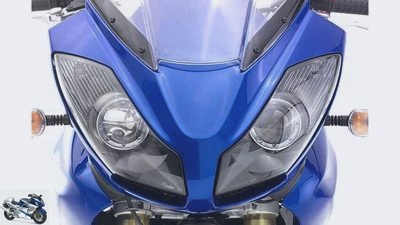
triumph
3/20
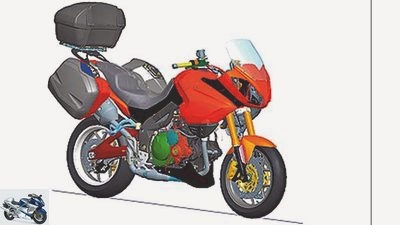
triumph
4/20
The touring accessories were included in the development and will be available upon market launch.

triumph
5/20
The tiger bares its teeth: The new model looks sportier, more dynamic.
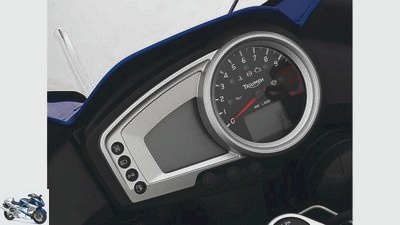
triumph
6/20
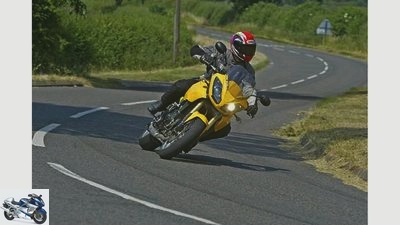
Jahn
7/20
Exclusive driving report of the new Tiger in MOTORRAD 20/2006.
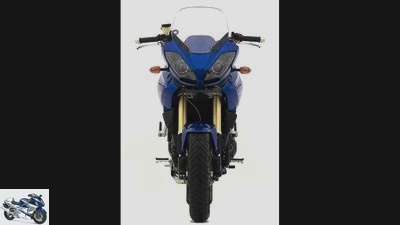
triumph
8/20
After the tour and details, the photo show shows exclusive driving pictures from MOTORRAD.
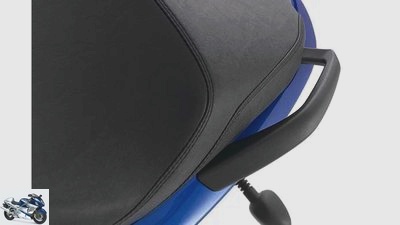
triumph
9/20

Jahn
10/20
MOTORRAD drove a pre-production model in the last stage of development.
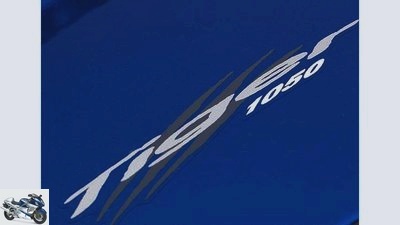
triumph
11/20
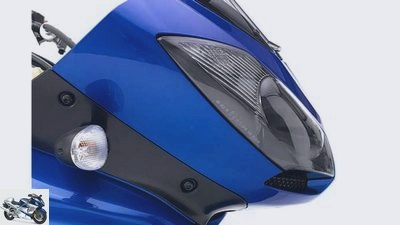
triumph
12/20
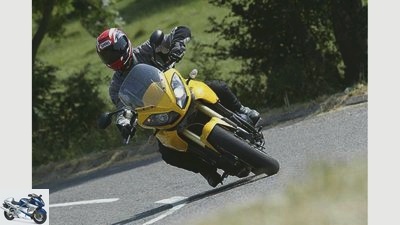
triumph
13/20
Triumph specifies 115 hp as the top performance.
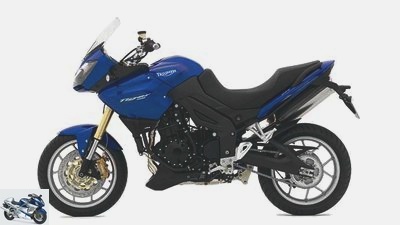
triumph
14/20
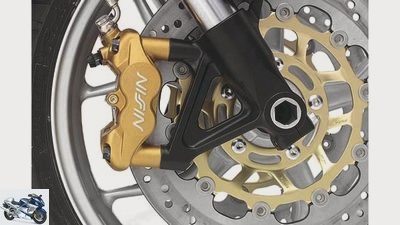
triumph
15/20
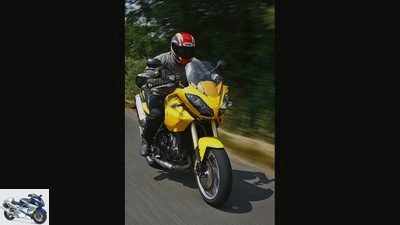
triumph
16/20
First impression: That feels like more.
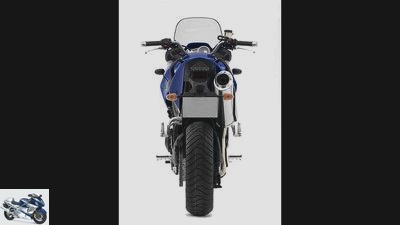
triumph
17/20
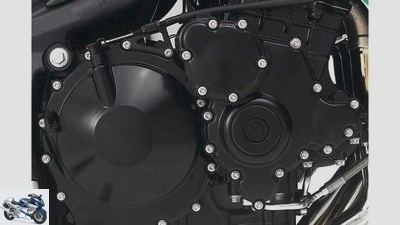
triumph
18/20
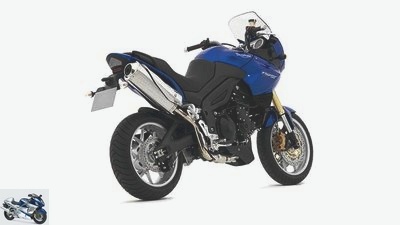
triumph
19/20

triumph
20/20
Alpen Masters, part 2
Enduros / fun bikes and tourers / sports tourers
All-rounders, big bikes and athletes have already been checked, now enduros / fun bikes and tourers / sports tourers are checked for French passports. Who is allowed to reach the finals and above all: Who will be King of the Alps in 2007?
W.hat actually attracts people to the mountains? Is it just the great view? Or the grandiose nature? The loneliness in the lofty heights? In the end, even the search for yourself? Philosophical questions that only marginally interest the MOTORRAD test crew on the Col du Galibier. What is certain is that motorcyclists are particularly drawn to the mountains. And so it’s only about one thing for the testers: to choose the King of the Mountains for the third time, the best motorcycle for the Alps.
Buy complete article
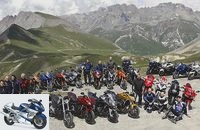
Motorbike is looking for the King of the Alps 2007
Alpen Masters, part 2
Enduros / fun bikes
The candidates flying in formation.
Before taking a long right-hand bend over a small bridge to the last steep ascent to the Col du Galibier, a scree path branches off to the left, which winds 500 meters up to the Camp des Rochilles. The test group hesitates for a moment. Left or right? Hardenduro country or fun bike terrain? Off-road plowing or sweeping surfing? The KTM rider makes the decision, is the first to accelerate and turn right.
Kart on two wheels:
The choice of the KTM rider is understandable. Because the KTM 690 Supermoto is a merciless fun bike. Its 66 hp engine breaks with the character of a classic single cylinder. The single twirls up the speed ladder with incredible nonchalance, takes a deep breath from 5500 rpm and then pulls the chain at full power as early as 2500 rpm. The clutch separates as light as a feather and the gears lock precisely. In addition, the anti-hopping clutch and the low drag torque allow the KTM to act as neutrally as a multi-cylinder.
The chassis perfectly matches the character of the engine. Far ahead, but ergonomically well accommodated, the pilot holds the front wheel on the ground and so plunges into the swarm of curves. WP fork and shock absorber swallow every wave, no matter how small, and impress with their excellent response behavior and full damping. The front brake is good-natured, solid, the rear counterpart, on the other hand, is a bit toxic. The supermoto swings around curves in a flash. Super handy and nimble as a rabbit, it can hit the hook, drives like a kart straight through hairpin bends. But it’s only really fun when you’re fast. When driving half-heartedly, the KTM expresses its displeasure with wobbly, nervous driving behavior. All or nothing is the motto. One hundred percent cornering fun can be experienced with the supermoto, but it is not suitable for traveling.
The 690 Supermoto from KTM delivers one hundred percent fun on bends – but it’s not good for traveling.
Another joker:
The Kawasaki Versys is also more of a fun bike than an enduro. But it is nowhere near as radical. Your measured 68 hp two-cylinder pushes significantly better from lower and medium speeds, demonstrates more power without losing much of its liveliness. The Versys accelerates cleanly, enjoys low load change reactions when approaching bends and bends, and surprises once again in the Alps with its low fuel consumption of 4.6 liters and a range of well over 400 kilometers.
They can be rewound easily and loosely. The driver sits comfortably and upright on the Versys. There is even enough space for a passenger. Too bad that the payload is so low at 179 kilograms.
Their successful compromise of tight coordination and comfort that is still suitable for touring, as well as their well-balanced balance ensure neutral driving behavior and plenty of driving pleasure. Only when the pace is sporty is the telescopic fork sometimes a little overwhelmed on the sometimes lousy asphalt surface and starts to stumble. For the front brake, however, you don’t even have to be fast to find displeasure at the indifferent pressure point and the long lever travel, which is why the Versys in the Alps is a little disappointing.
Travel steamer or enduro?
Compared to the Kawasaki Versys, the Honda Varadero is a huge motorbike’s dream and weighs an impressive 283 kilograms. No motorcycle for turning exercises and certainly none for off-road. Once on the move, put the masses into perspective, the colossal Varadero is not exactly a toy, but it is quite pleasant to drive and quite easy and safe to master. With stoic calm, the 1000er rolls, emotionally disconnected from the road, comfortably like a sedan chair over bumpy asphalt. Its spring elements are surprisingly puncture-proof even when fully loaded. She swings effortlessly through curves, dutifully rounds even the tightest switchbacks. Their velvety V-engine, which accelerates smoothly, also contributes to this. 93 hp are more than sufficient, especially when they unfold so evenly and can be accessed quickly.
The brakes keep the Varadero safely under control on steep downhill sections. The composite brake with ABS regulates sensitively and even enables short braking distances on gravel. With a well-protecting fairing, Honda’s fat-bellied Enduro is not only suitable for traveling, but also surprisingly suitable for the Alps. Without sporting ambitions you are very well served with it.
It’s all in the mix:
The Tiger has what the Honda lacks for class victory: less weight, for example. 236 kilograms, which, in conjunction with the high-torque, genuine 119 hp three-cylinder, are transformed into exhilarating driving dynamics. The hoarse hissing triple depends very directly on the gas, delivers usable power from idle speed and converts it into a lot of thrust. Pure pleasure to jump from turn to turn like a predator on the prowl. The two-finger brake works perfectly in harmony with the engine power and is very effective in an energy-saving and precise manner. The ABS regulates pleasantly and sensitively. And the tightly tuned telescopic fork provides great feedback, not only to convey a good, safe driving experience from a sporty point of view. The only weak point of the consistently stable, precise and manageable chassis is the lax suspension strut, which almost seems to collapse under heavy loads.
The more active seating position compared to the Varadero fits like a tailor-made. In return, the seat is not as softly padded as on the Honda counterpart, but it is comfortable. There is also enough space for a passenger, and the sporty trim provides good wind and weather protection. Better than the Honda: the equipment. The range of options extends from the adjustable chassis to the remaining kilometer display and the main stand. One point adds up to another and the triumph ensures entry into the Alpen Masters final.
Conclusion Enduros / Funbikes
Victory in this class for the Triumph Tiger
The Tiger narrowly decides the class win over the Varadero for themselves. Its dynamic, extremely powerful three-cylinder and the precise driving experience that it conveys ultimately made the difference over the better wind and weather protection and the more comfortable passenger transport of the Honda. At the Versys, secretly celebrated as the V-Strom successor, the suspension and brakes in the Alps were disappointing. The KTM is too sporty, its range of use is too limited to be at the forefront.
Tourers / Sports Tourers
Comfortable, safe and fast: the candidates in the Sports Tourer and Tourer category.
The road winds in gentle arcs through the ocher-colored, monotonous landscape. Not a tree, not a bush, not even mountain flowers can be seen. At least on the horizon the sky shines blue. The motorcyclist turns corners at corners without a clean line. He looks awkward, almost insecure. Doesn’t he know his way around here? Can’t actually be. Because his motorcycle moves GPS-controlled on the navigation screen. The reality at Col du Galibier looks much, much nicer.
It couldn’t be more complete:
The navigation system on Yamaha’s FJR 1300 super tourer is only available for an extra charge, but even without this geographical helper, the silky-smooth, four-cylinder with measured 135 hp and ample torque curve is not only well equipped in terms of its engine. From the electrically adjustable, well-protecting windshield, heated grips, ABS and the precise composite brake to the case system, everything is available as standard to make traveling pleasant and safe. For a surcharge, a semi-automatic system, like the one on the test machine, is available.
The aisles can be casually zapped through exactly without using the clutch. With a lot of pressure, things go smoothly. Only the stiff throttle grip develops into a real horror during the course of the day. After just a few hours of driving, the palm and wrist begin to hurt from holding and pulling.
The entire equipment weighs heavily: 297 kilograms, which is a record in this comparison field. Weight that is ubiquitous, especially in the mountains. When braking before turning, when turning before turning, you can feel every kilogram. With its comfort-oriented suspension elements, the FJR lies well on the road, but there is no question of handiness. When driving in a sporty style, the suspension elements clog, and the telescopic fork locks up when braking hard.
It is surprising how playfully the travel Guzzi waves towards the sky.
Light and lively:
The BMW F 800 ST weighs almost 80 kilograms less. But it also has two cylinders and 500 cubic centimeters less displacement and, with 90 hp, a significantly lower output. A major handicap? The engine hangs smoothly on the gas, shows little load change reactions and can be switched almost noiselessly. But the F 800 struggles harder up the hill, demands gear changes more often and has to be turned more than the FJR. Amazingly, this does not affect fuel consumption. On the contrary: with 4.6 liters, the two-cylinder is extremely economical.
Thanks to its balanced and neutral driving behavior, the F 800 ST is easy to control. Whether hairpin bends or fast alternating curves, it traverses any radius on a beautiful, clean line. However, it is not handy either. Their comfortably tuned suspension elements respond sensitively, and even wavy, eroded road surfaces can do little to affect their driving stability. Only their moderately adjustable front brake may not really fit into the good picture of the chassis. Ultimately, however, it falls behind the FJR in third place because of its not so lavish equipment, the poorer seating comfort for driver and front passenger and also because of the moderate wind and weather protection.
The basis is right:
Bassy motorcycle sound echoes back from the rock massifs. What a sound! And typical of a Guzzi. Her outfit is less typical. With elegant cladding, height-adjustable windshield and comfortable bench and suitcases, the Norge puts you on tour. In addition, an ABS is standard on board.
The two-cylinder should produce 93 hp. The test bench only finds 82, which unfold quite homogeneously on the speed ladder up to 7600 rpm, so that the expected, but lacking, powerful acceleration from low speeds is bearable. A little shift work in the smooth gearbox is the order of the day if you want to move forward faster. At 5.5 liters of Super, fuel consumption is pleasantly low, and the range of over 400 kilometers is enormous.
It is surprising how playfully the Reise-Guzzi waggles towards the summit. It conceals its weight of 278 kilograms by cleverly distributing the pounds and impresses with its enormous handiness and precise steering. Curving over winding alpine roads is really fun. Unfortunately, the Italians did not consistently finish the comfortable tourer. The central spring strut reaches its limits under load. And the easy to dose, powerful brakes showed limits in their resilience. After a heated descent, the rear stopper heated up so much that the pressed brake line came loose from the fitting. Hopefully an isolated case.
A power pack:
Problems with the brakes are alien to the K 1200 R Sport. Her brake calipers grasp the discs tremendously, decelerating the 246 kilogram heavy and measured 162 hp inline four-cylinder. Only slightly better controllability and a clearly defined pressure point would be desirable in order to be able to enjoy the driving dynamics of the sports tourer even better. It lies full on the road, and the suspension elements react sensitively to uneven road surfaces. Bumpy asphalt, potholes – the ESA chassis (subject to a surcharge) always keeps you calm. In the tight “Sport” mode, the already high steering precision is best. The K stays perfectly on course, does not touch down anywhere, does not tip over even in tight bends, but it is far from a handling miracle.
Your four-cylinder is a stunner, silky smooth running and gentle throttle response as well as smooth gear changes guarantee a relaxed feeling. Even from low speeds, the engine gives a powerful boost, which is why you hardly have to change gears. Above it has brute thrust.
The all-round carefree package consisting of a powerful engine and superior chassis ultimately gives the K 1200 R Sport a class win, although it only scores average in terms of seating comfort and wind and weather protection.
Conclusion Tourer / Sporttourer
BMW K 1200 R Sport
Its powerful, cultivated engine and the precisely steerable chassis, which is raised above all road surface conditions, make the K 1200 R Sport the class winner. The FJR 1300 AS is recommended as a well-equipped touring motorcycle, but through the Alps it tortures itself with its excess weight and with its stiff throttle it saps the rider’s condition. Both the F 800 and the Norge are much easier. Those who can do without powerful engines will be very happy with both motorcycles.




17th photos
Images: Alpen Masters, part 2
To home page
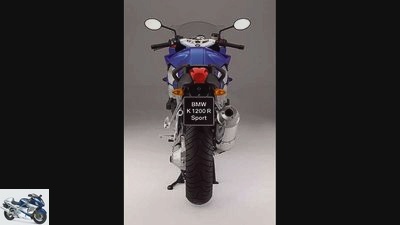
BMW
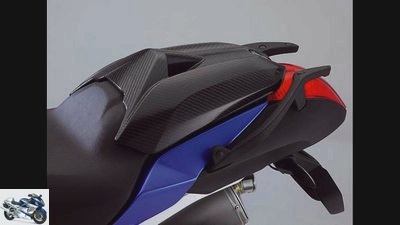
BMW
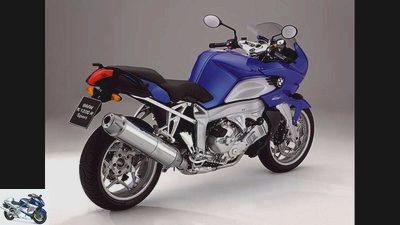
BMW
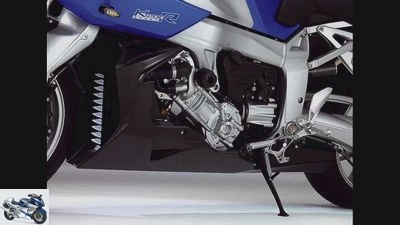
BMW
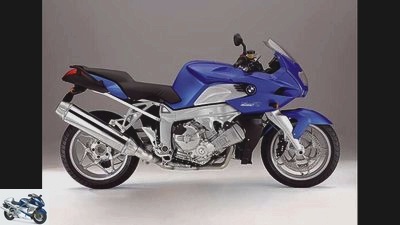
BMW

BMW
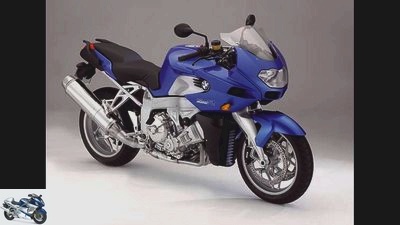
BMW
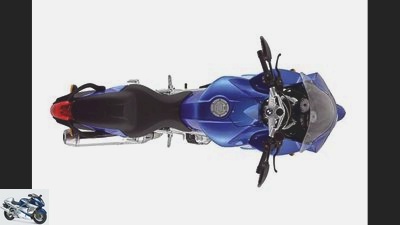
BMW
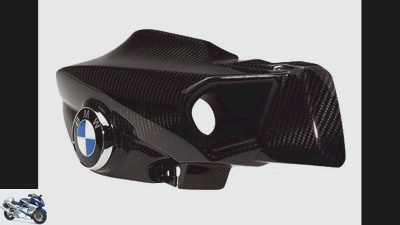
BMW
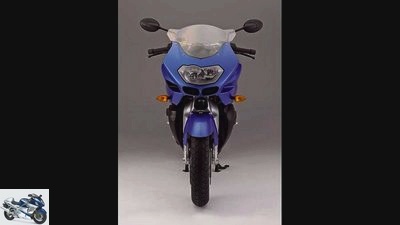
BMW
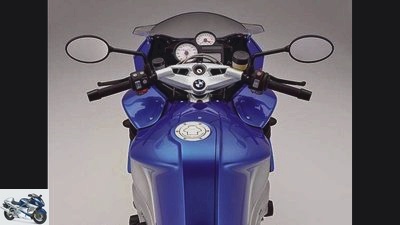
BMW
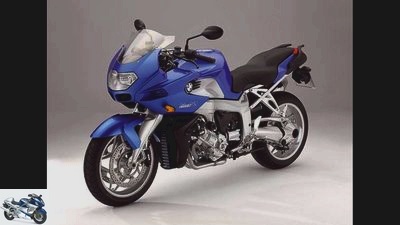
BMW
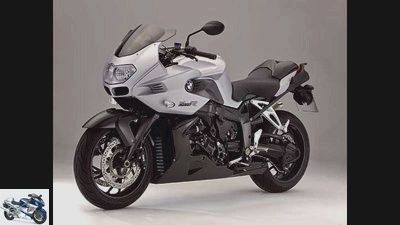
BMW
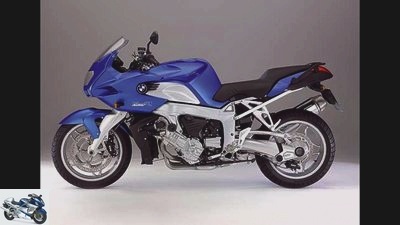
BMW
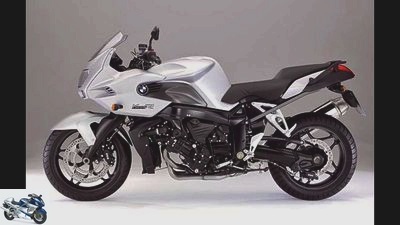
BMW
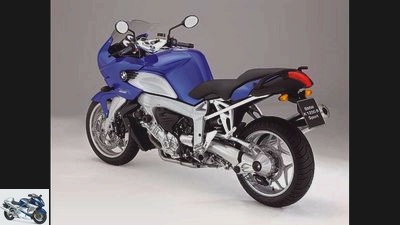
BMW
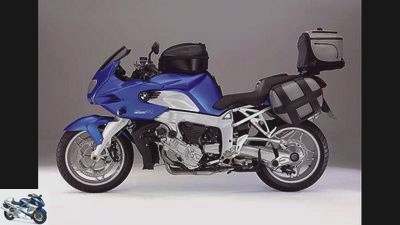
BMW
The grand finale
The five finalists and the old king of the Alps: BMW K BMW K 1200 R Sport, BMW R 1200 R, Honda CBR 600 RR, Honda Hornet 600, Triumph Tiger and the Suzuki V-Strom 650.
There is a saying that you cannot choose your family. His friends do. And that’s good. But what if you yourself have a weakness for super athletes, but your best friend loves his enduro more than anything? This is by no means an obstacle to having fun outing together. This is proven by countless tour groups that are anything but, let’s call it, made up of a vehicle-like structure. Seen in this way, the mixed group that competes in the final of the mega test represents the normal everyday alpine holiday routine. Two BMWs – the R 1200 R made it through the big bikes, and the K 1200 R Sport emerged as the best in the touring / sports touring category. Two Hondas, too: The CBR 600 RR relegated the much stronger athlete competition to its place, and the new Hornet prevailed among the all-rounders. The Triumph Tiger dominated the funbikes / enduro class. The test crew is now eagerly awaiting the direct comparison of all bikes with the Suzuki V-Strom, the previous winner of the MOTORRAD Alpine Masters, which was held for the first time in 2005. It is only now rolling out of the garage.
It is an early Sunday morning at the foot of the Col du Galibier, 1480 meters above sea level. Pieces of cloud waft in the gorge, rays of sun slowly work their way over the massif. It should be a beautiful day, flooded with light, up to 28 degrees warm. Not much of that can be felt yet, the thermometer shows eleven degrees. The leather is clammy, pinches somehow. The hands seem to be stiff, missing hair is replaced by a hat or a scarf. Six starting engines cut the silence. Alpine starting problems? No. All motorcycles master the difficult conditions such as cold, wet or altitude by injection. One or two bursts of gas, you can knock in first gear, and off you go.
Moderate pace, in a string of pearls over the Galibier. The streets are damp, the tires are cold, the six guys are fully motivated. Noticeable: Both Hondas and Suzuki were not the first choice for vehicle allocation. Reason: The other three bikes have heated grips, and it is now a maximum of five degrees on top of the pass. The ascent to the Galibier is characterized by fairly wide radii and few curves that you have to poke »blind« into.
And all of the finalists work perfectly there. The biggest surprise is without a doubt the CBR 600 RR. Designed for the race track, it has disadvantages on the Alpine pass due to the low handlebar stubs, i.e. a sitting position that does not guarantee a better overview. The fact that it still doesn’t turn into a no-go after repeatedly swapping the bikes is due to its fascinating ergonomics. The test drivers’ bodies fit into it like a piece of a puzzle. From the 1.67-meter editor Henniges to the 1.94-meter test boss Thole – nobody in the group complains about having to knot arms or legs. In addition, the 600 gives you the feeling of holding your front wheel almost directly in your hand, because you are sitting so close to the steering head. So the CBR surprises with a relaxed attitude that you don’t expect on an athlete. And the others?
Six testers, seven opinions: At the end of the day, everyone creates their own personal ranking and then it is billed.
The crown for the criteria of all-round visibility and seating comfort was born to the BMW R 1200 R. You have the best view from its long-distance seat – and that is a particular advantage in the alpine world. Firstly, because you have to swivel your head around the axis by almost 180 degrees to scan the curve. Second, because you should take home more impressions from the mountains than flimsy memories of more or less ideal lines – keyword sightseeing.
It continues over a long curve to the Col d’Izoard. 22 degrees, great mood, almost optimal grip. When swinging gently through wide curves, the engines of the tigers such as the K 1200 R Sport in particular draw attention. It practically doesn’t matter which gear you have engaged – a slight twist of the throttle zooms both machines forward with enormous force, even in the low-rev range. When it comes to pushing out of curves, these two drives are unbeatable. But the mountains are treacherous. The last 500 meters of the 2360 meter high Izoard have to be completed over a serpentine passage that looks like someone has squeezed it with a gigantic fist. One 180 degree turn chases the next. Connecting line? Less than 100 meters long. The whole thing is seasoned with an incline of over 17 percent – a supermoto track on the slope. Is engine power everything here?
You are sure to lag behind on the mountain with a hyper-handy 125cc. On the other hand: Power is nothing without control. Which is why the rather unwieldy BMW K 1200 R Sport can’t really transform its muscles into power. Their long wheelbase, high weight and sluggish turning behavior spoil their advantage – precise driving is different. But even the ultra-handy Hondas cannot implement their performance on the steep slope. Turn in, bend, straighten up – ratz, fatz – it’s like emptying a little Kolsch. But what comes next is best known from 125cc motocross bikes: slipping the clutch. In first gear, the horses have to be pressed out of the engine housing in hairpin bends at at least 7000 rpm. At least if you want to be on the move quickly. And loves the lightness of being.
However … it is completely different. The Tiger, for example, gives an idea: wide handlebars, precise turning, powerful pressure – making rapid progress easy. With the Triumph, going up and downhill is a lot of fun. Only the fairly high center of gravity and the wide 180 cup reduce the maximum enjoyment. And that’s what two bikes offer: Although the Suzuki V2 has to accelerate almost a kilogram per hp more than the BMW Boxer, the shortcoming when swinging in curves on the mountain is hardly noticeable thanks to the short gear ratio. Advantage of the ex-alpine queen: a relaxed, upright sitting position paired with incredibly light-footed handling. The V-Strom, which weighs 214 kilograms, benefits from its wide handlebars, balanced weight distribution and, last but not least, from the narrowest rear tire of the comparison, a 150/70 R 17. And its comparatively weak 69 hp drive allows low-speed strolling just like it does at can be squeezed out at the highest speeds. In addition, the Suzuki makes its driver and passenger very relaxed. A worthy winner in 2005 and 2006.
But the BMW R 1200 R scratches the crown. The 1200 boxer is extremely powerful, pushes hard up to 5000 rpm and literally explodes above it. The R is suitable for both strolling and quick hunting. Also handy, accurate and extremely stable, but not as light-footed as the V-Strom, which is due to the slightly wider tires and the steering damper.
The team takes a break, stops at a bistro at the foot of the Col de la Bonette to watch the eighth round of the Moto GP class on TV and to refill cool water for the soul and skin – it is now 28 degrees. This is followed by the ascent to the pass and on to the Cime de la Bonette. It is fascinating that, thanks to injection technology, even the speed-demanding 600 engines of the Hornet and the CBR implement gas commands perfectly at an altitude of 2,800 meters. The BMW technicians should learn a thing or two about it. Both in the north German lowlands and up here, on the roof of the Alpine world, the K does not hang particularly cleanly on the gas. Your delayed throttle response in connection with the load change reactions of the cardan drive ruin a round line for the driver. The fact that Bayern can actually do it is proven by the boxer’s vote, who implements gas commands with practically no delay.
Arrived at the vantage point at 2802 meters above sea level, the group of finalists is offered a breathtaking view. With a little imagination, you can see the Himalayas. At least if you let it wander east. Towards the west, clouds herald a violent weather change.
And he meets the team on the following day, on which the test lap is driven again. It’s not raining twine, no, it’s raining ropes. To make matters worse, truckloads of gravel were spilled on the 40 bends from Col de Mollard down to the Arc Valley. A horror film. Title: Biking like on black ice, garnished with bumps downhill. The sweat runs in rivers. Especially with the K-Pilot. He has to maneuver his pedestal around the narrow gravel turns like a cow over the ice. The feedback from your front wheel guidance is very indirect and the brake is equipped with an ABS, but not crystal clear.
The CBR driver feels a little better. Because their suspension setup is top notch. It filters out the smallest bumps, dampens violent blows and tells you the life story of every chip. However, a super athlete requires a lot of experience under such conditions. Especially since the brake can be easily adjusted and is very effective, but has no ABS.
An enduro like the Triumph Tiger is much easier to control in this environment. However, when the going gets really tough, the shock absorber hits the ground – the soft damping cannot cope with hard attacks. In addition, the British woman is a quite full-grown motorcycle with a high center of gravity, a wide saddle and a seat height of 850 millimeters, so it is not the best choice for short-legged novice drivers despite well-functioning ABS under adverse circumstances.
In such situations, both the V-Strom and the Honda Hornet shine. The only disadvantage of the Suzuki: The stoppers miss an exact pressure point. Pulling the lever feels like squeezing a rubber ball. And that is the strength of the Hornet: It is not only more handy, lighter and has outstanding handling, but also a foolproof ABS brake that leaves nothing to be desired.
Lack of controllability is also a weak point with the R 1200 R brake. Not much happens in the first third of the lever travel. But then suddenly the four-piston fixed calipers grip like a steel fist. A very unpleasant characteristic, especially on critical surfaces. Fortunately, the perfectly functioning ABS keeps the BMW on course. And the ASC traction control turns out to be the surprise. This makes it possible for absolute gross motorists to fully open the gas tap on the slippery surface without falling immediately.
It is evening and the rain has cleared. Countless curves and seemingly endless driving days are already a thing of the past. The engines of the finalist motorcycles are ticking away in a parking lot at the Galibier. Six test drivers with very different riding styles and preferences will now choose the 2007 Alpine motorcycle. It is really not easy to filter the best out of the flood of impressions under extremely changeable conditions. So the author of these lines asks his fellow passengers a simple question. A question that you ask friends about and that makes the decision much easier: »Imagine you have to drive over the Alps and back in one go. It’s raining in parts. Even snow is hot. And you still want to have fun. Which bike do you take? ”After all, you can’t choose the weather. The right motorcycle, on the other hand, does.
Conclusion Alpen-Masters 2007
The new queen: BMW R 1200 R..
That was close. The Suzuki V-Strom could almost have repeated its triumph of recent years. But BMW took the title away from her. The boxer chassis is extremely stable, the machine steers very precisely, it is agile and cuts a fine figure in all situations. With its good ABS, traction control, ideal luggage storage options and, last but not least, the powerful boxer engine, the R 1200 R takes the lead. The only downer: the new Alpenkonig is 6145 euros more expensive than the old one. For this amount, many an alpine crossing can be realized.




27 photos
Images: Alpen Masters, part 2
To home page
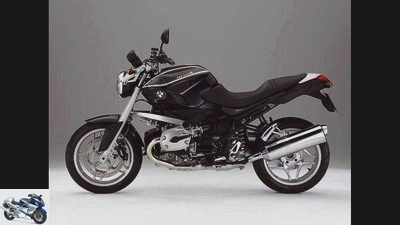
BMW
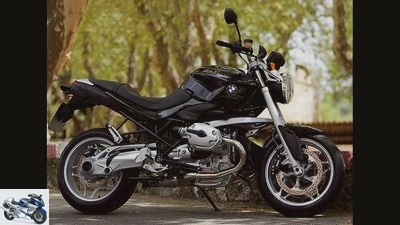
BMW

BMW
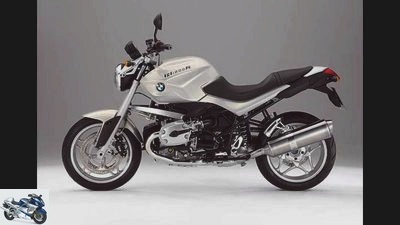
BMW
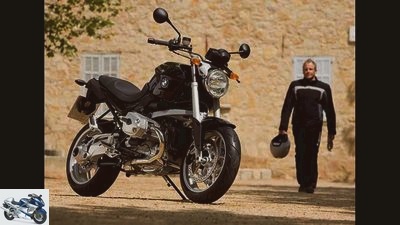
BMW
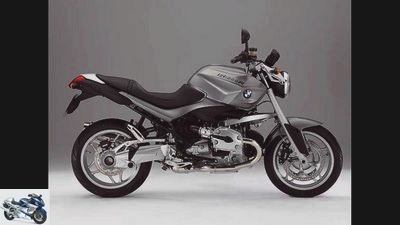
BMW
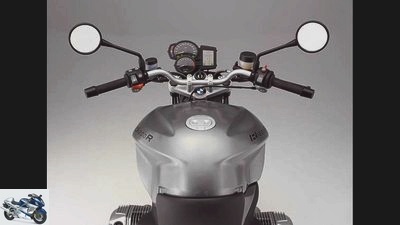
BMW
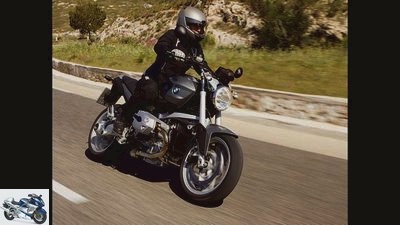
BMW
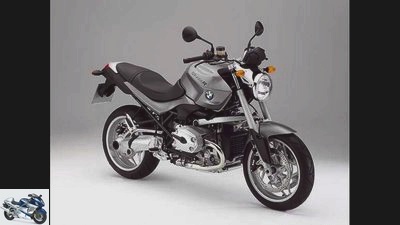
BMW
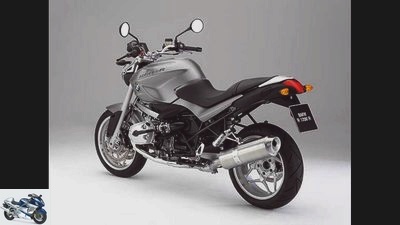
BMW
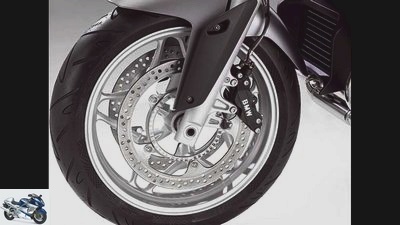
BMW
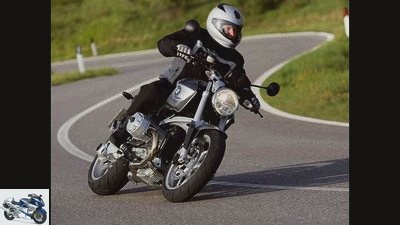
BMW
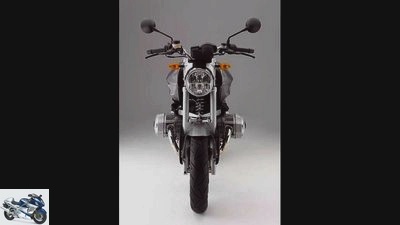
BMW
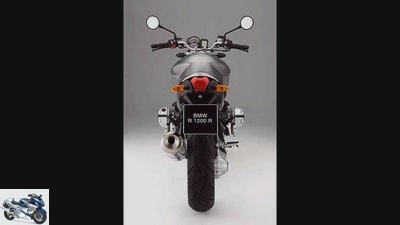
BMW
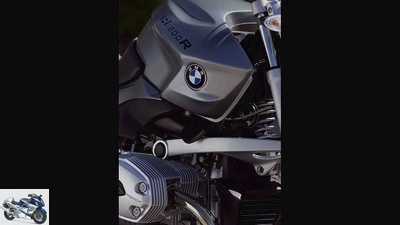
BMW
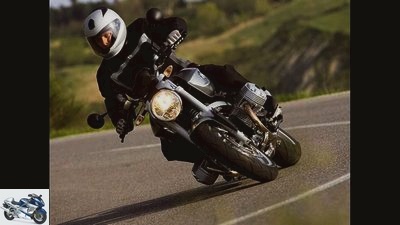
BMW
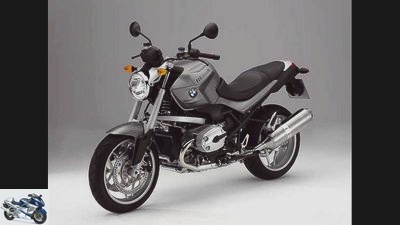
BMW
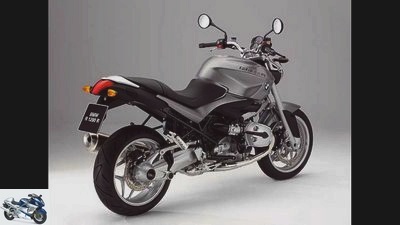
BMW
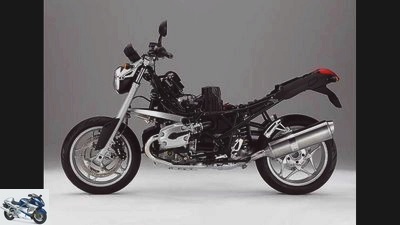
BMW
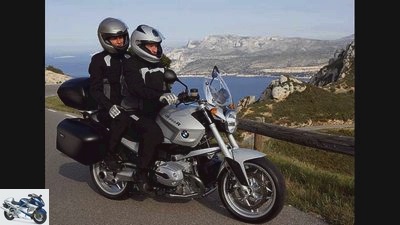
BMW
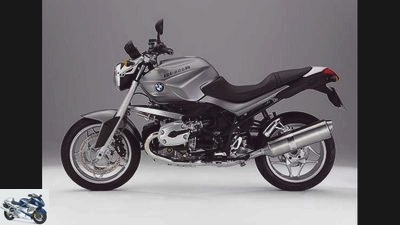
BMW
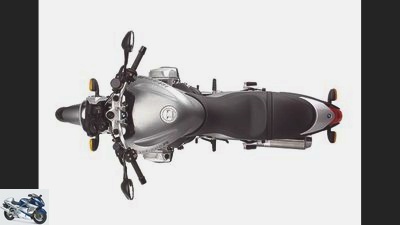
BMW
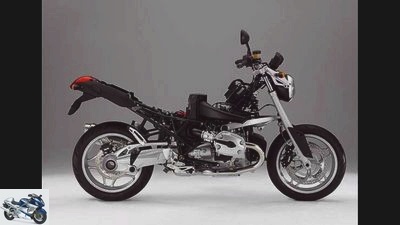
BMW
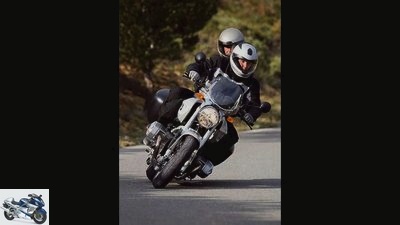
BMW
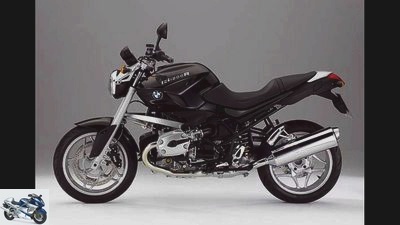
BMW
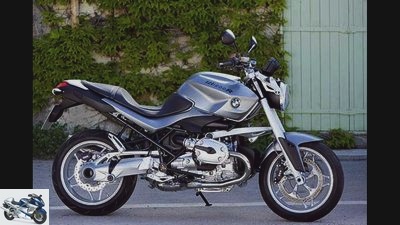
BMW
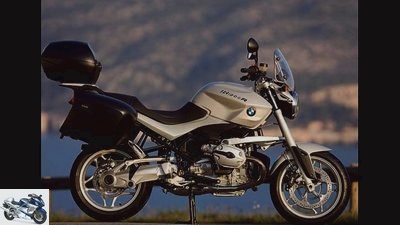
BMW
The highest alpine passes
1. Cime de la Bonette 2,802 meters France
2nd Col de l ?? Iseran 2764 meters France
3. Stilfser Joch 2757 meters Italy
4. Col d ?? Agnel 2744 meters France / Italy
5. Col du Galibier 2645 meters France
6. Passo di Gavia 2618 meters Italy
7. Edelweiss peak 2587 meters Austria
8. Timmelsjoch 2509 meters Austria / Italy
9. Umbrail Pass 2503 meters Italy / Switzerland
10. Nufenen Pass 2478 meters Switzerland
Review of the previous Alpine Masters
For the third time, MOTORRAD transported 20 motorcycles to the Alps to determine who was the king of the Alps. The idea: in a large comparison test with machines from all categories to filter out the model that made the best impression under these special conditions. For this purpose, the new models of the respective year are selected, as well as test winners and other interesting candidates. A special point evaluation was developed especially for the Alpine Masters, and all motorcycles go through a special measuring procedure. In the past two years, this major test, in which colleagues from leading international specialist magazines have also participated, has been carried out on the Stilfser Joch, the legendary pass stretch on the border between Italy and Switzerland.
When the Suzuki V-Strom 650 won against the bigger, stronger, and more expensive competition in 2005, it was a surprise. However, it shows that under these special conditions it is not power and speed that count, but handiness, a high-torque drive and excellent all-round qualities.
In 2006, the Suzuki was able to defend its title in front of the Honda CBF 1000. BMW was each time represented with two machines in the final, but so far it has not been enough to win.
The ratings from part 1
In the first part of MOTORRAD 16/2007, the winners were determined in three categories. While the two Hondas, the Hornet 600 and the CBR 600 RR, came out on top in their categories, the BMW R 1200 R won the Big Bikes just ahead of the Suzuki Bandit 1250 S..
All-rounder
Honda Hornet 600 319 points
Suzuki SV 650 S 292 points
Yamaha FZ6 Fazer S2 289 points
BMW G 650 Xcountry 253 points
athlete
Honda CBR 600 RR 311 points
Suzuki GSX-R 750 294 points
Yamaha YZF-R1 289 points
Ducati 1098 259 points
Big bikes
BMW R 1200 R 366 points
Suzuki Bandit 1250 S 362 points
Kawasaki Z 1000 307 points
Benelli TreK 1130 274 points
The Alpen Masters course
In the heart of the French Alps: above the test track for the preliminary rounds, on the right the route for the finals with the bonette as the highlight
In 2007 the Alpine Masters took place in the heart of the French Alps around Briançon, one of the highest cities in Europe. The test track of the preliminary rounds, in which the individual class winners were chosen, led over the Galibier, Lautaret, Croix de Fer and Telegraphe passes. For the final, the international test team looked for an even more demanding round. The goal was the highest pass in the Alps or, more precisely, the Cime de la Bonette ring road (2802 meters) that branches off from the pass, where you can enjoy a magnificent view from Mont Blanc to the Mediterranean when the visibility is good. The way there led from the starting point Les Verneys down the Lautaret to Briançon, from there over the varied, steep Col d ?? Izoard and to the Col de Vars. Back it went past the Lac de Serre Poncon. A round that offers everything and places high demands on people and machines.
Data Enduros / Funbikes
Honda Varadero 1000
2-cylinder, 996 cm3, 94 hp, 98 Nm, 283 kg, load 190 kg, ABS, 11190 euros
plus
Refined, elastic engine
Good draft
Low load change reactions
Convenient suspension setup
Easy and safe to drive
Fine brakes
minus
High weight
Difficult to maneuver
Moderate equipment
Kawasaki Versys
2-cylinder, 649 cm3, 64 HP, 61 Nm, 210 kg, load 179 kg, ABS, 7585 euros
plus
Powerful engine
Very low consumption, long range
Comfortable sitting position
Easy and safe to maneuver
minus
Chubby fork
Badly controllable, spongy front brake
Low payload
KTM 690 Supermoto
1-cylinder, 654 cm3, 64 hp, 65 Nm, 163 kg, payload 187 kg, 8398 euros
plus
High-revving, powerful single cylinder
Super handy
Stable chassis
Well-coordinated, sensitive spring elements
minus
Motor inelastic and not very powerful
Permanently uncomfortable sitting position
No wind and weather protection
Data winner Enduros / Funbikes – Triumph Tiger
3-cylinder, 1050 cm3, 115 hp, 100 Nm, 236 kg, payload 192 kg, ABS, 11240 euros
plus
Very powerful engine
Great performance
High steering precision and feedback
Sensitive and powerful brakes
Decent equipment
minus
Underdamped suspension strut that is overloaded when loaded
Somewhat high consumption
Moderate passenger comfort
Data tourers / sports tourers
BMW F 800 ST
2-cylinder, 798 cm3, 85 hp, 86 Nm, 218 kg, payload 187 kg, ABS, 10,090 euros
plus
Soft performance
Low load change reactions
Low fuel consumption
Balanced, neutral driving behavior
Comfortably coordinated spring elements
minus
Not particularly handy
Badly adjustable front brake
Average equipment
Moto Guzzi Norge 1200 GT
2-cylinder, 1151 cm3, 93 hp, 96 Nm, 278 kg, load 200 kg, ABS, 14,570 euros *
plus
Homogeneous performance characteristics
Comfortable seating position for driver and passenger
Great coverage
Very handy and agile
Easy to drive
minus
Overloaded central spring strut
Adjusting the height of the pane disturbing the field of vision
Yamaha FJR 1300 AS
4-cylinder, 1298 cm3, 144 hp, 134 Nm, 297 kg, payload 206 kg, ABS, 17794 euros
plus
Cultivated engine run
Powerful
Good wind and weather protection
Decent driving comfort
Complete equipment suitable for travel
minus
Bulky landing gear
Much too stiff throttle twist grip
Load change reactions
Data Winner Tourer / Sport Tourer – BMW K 1200 R Sport
4-cylinder, 1157 cm3, 163 hp, 127 Nm, 246 kg, payload 204 kg, ABS, ESA, 16006 euros
plus
Vehement performance
Bearish torque
Silky smooth engine running
Precise, very stable chassis
Very well tuned, electronically adjustable chassis
minus
Strong, but not easy to adjust brake
Lack of passenger comfort
The review of Zep Gori
The BMW R 1200 R convinced the Italian fair-weather driver even in the dry. When the Bavarian Berliner carried him absolutely safely through the wet and over gigantic gravel surfaces ?? “ABS and ASC are great guardian angels, the ESA chassis is a divine gift for lazy people like me” ?? he got totally into raptures. The powerful naked bike with a classic look is by far its number one. Behind: the V-Strom. Because he gets “a lot of fun and weather protection for relatively little money” from her. Zep uses the Hornet as the third: good workmanship, easy handling, top ABS. However: “I don’t like high-revving engines.” He would have actually seen the Tigers further ahead. “But the soft shock absorber and the lousy pillion seat are unforgivable, the processing quality leaves a lot to be desired.” The Italian’s bottom line: the K 1200 R Sport. »Too long, too heavy, too unwieldy? you also have to park them like a truck. ??
The rating of Gert Thole
As head of the test, he has a lot of experience with various boxer BMWs, and in the case of the R 1200 R test machine is surprised at the degree of maturity that the Bavarian two-cylinder has now reached. For example the circuit: »No clong, no crash. Now that it’s no longer there, you almost miss the background noise. ”The off-road fan sees the Suzuki V-Strom 650 just behind it:“ Great machine, if it had just a little more power. ”It follows Honda four-cylinder duo: “Just typical Honda, neutral, balanced, almost perfect.” And in one point absolute top: “Nobody has better brakes than the Hondas.” With or without ABS. And the Triumph Tiger? She could easily have become Queen of the Alps. Would have if the British hadn’t laid the landing gear too slack. In the end, clear for the test boss: the BMW K 1200 R Sport: »It’s a pity, such a fantastic engine. Just the rest … ??
The rating of Rolf Henniges
Barely eight years in Swabia, the North German already seems to have fully integrated. Because “Miss Easy” V-Strom convinced him not only with virtues such as wind protection, handling and motor, but also with “the extremely good price-performance ratio”. For the MOTORRAD test editor there is “nothing that needs to be improved” apart from the design and the gummy brakes. Second for him is the BMW R 1200 R, and that »even without the many electronic helpers like ASC or ESA. In addition, the design is timeless «. The Tiger lands in third place, because it is “more cumbersome to act than the Suzuki or the K-BMW and has a real chassis deficiency compared to them.” The surprise for him: “There is hardly a motorcycle that sucks you in like the CBR” ?? Fourth place. Followed by the handy Hornet, whose speeds are “completely out of place in the mountains”. Tail light for the northern lights: the BMW K 1200 R Sport. “I’d rather ride a Harley. That has more style.
The review of Kristijan Ticak
For the Croatian, the R 1200 R was something like love at first sight. “The fact that the boxer completely convinced me on the ride was the icing on the cake.” The comfort on third-order country roads “is outstanding” and even the wind protection for a naked bike is incredibly high. Second choice: Suzuki V-Strom: “Inexpensive, top chassis, best weather protection and always sufficient performance.” Hornet is in third place for the editor-in-chief. Their performance is “easy to implement in the Alps” despite high speeds. He finds the tigers disappointing. “The handles are too thick, the ergonomics don’t suit me, and the shock absorber is just too soft” ?? Fourth place. And despite the fact that he is of the opinion that “super athletes cannot play to their strengths in the mountains,” he places the CBR ahead of the K 1200 R Sport. It would “just have power”. And can’t even turn sensibly on the pass road.
The rating of Sergio Romero
For the Spanish race fan there can only be one winner: the Honda CBR 600 RR. A motorcycle, “as handy as a feather and precise as a samurai sword.” In his opinion, there is hardly any other sport bike that works so extremely well in the Alps. However … this placement dictates his Spanish heart. His mind says: V-Strom. He puts them second. Because of their qualities. Not because of the look. “After all, I have the bike for driving and not for the garage.” In third place is the boxer. Due to its “poorly controllable brake and the cardan reactions” it cannot position itself further forward. It follows: Honda Hornet. »Speeds, handling, weight ?? if you know what I mean! «The tigers cut off. It does have »the best engine for the Alps«, but the gears, seating position and shock absorber simply push it backwards. Just in front of the BMW K. What does he say? “Nothing!??
The rating of Karsten Schwers
With the »agile motor and the brilliantly adjustable ABS brakes of the Tiger, no other can keep up with the finals«. This is why it is the first choice for top testers, even though the shock absorber is clearly too soft. This could also be remedied inexpensively. The R 1200 R shines with technical features, »only comes in second place because of the poorly adjustable brake and insufficient feedback from the front wheel«. The deserved winner so far has been the V-Strom 650, no motorcycle can be driven around the hairpin so easily. It’s a shame that it has lost its liveliness since Euro 3? Third place. The Hondas have too little torque in the Alps due to their displacement. Even if the seating position on the Hornet is more comfortable, the CBR is just ahead of the all-rounder due to “its brilliant chassis and ingenious brakes”. The K 1200 R Sport loses due to many things: noisy gearbox, hard throttle, too sporty seating position, sluggish handiness.
Related articles
-
Gargolov 45 photos 1/45 A flexible, high-torque engine is hidden in the Kawasaki Versys, but the Kawa cannot keep up with the BMW or the Ducati. The also…
-
Alpine Masters 2006 (2nd part)
Bilski Alpine Masters 2006 (2nd part) MOTORRAD is looking for the King of the Alps The big alpine test goes into the second round: The winners of the big…
-
45 photos 1/45 A flexible, high-torque engine is hidden in the Kawasaki Versys, but the Kawa cannot keep up with the BMW or the Ducati. The…
-
Alpine Masters 2005 (2nd part)
Artist Alpine Masters 2005 (2nd part) There can only be one After 11,800 test kilometers, unwound around the Stilfser Joch, the winners in the individual…
-
Alpine Masters 2006 (1st part)
Bilski Alpine Masters 2006 (1st part) Operation Summiteer Twenty machines compete in five categories for the ultimate competition in the Alps. Who can…
-
The travel enduros of the Alpine Masters 2012 in comparison
Gargolov 16 pictures Gargolov 1/16 Moto Guzzi Stelvio 1200 8V: She cannot be called light-footed. To reach them over narrow serpentine routes …
-
Big travel enduros put to the test at the 2014 Alpine Masters
Photo: fact / Joachim Schahl 13 photos fact / Joachim Schahl 1/13 The travel enduros Suzuki V-Strom 1000, KTM 1190 Adventure, Triumph Tiger Sport, Yamaha…
-
www. 116 photos fact, 1/116 The extreme seating position was also not ideal for the test track. fact, 2/116…
-
MOTORRAD is looking for the Alpine King 2008
Kunstle MOTORRAD is looking for the Alpenkonig 2008 Alpen-Masters, 2nd part Alpen-Masters, second part: First of all, it has to be clarified who is the big bike and …
-
The naked bikes of the Alpine Masters 2012 in comparison
Jahn 16 pictures Jahn 1/16 KTM 990 Super Duke R: The Duke only has to admit defeat to triumph. Turning in, folding down and straightening up goes with …